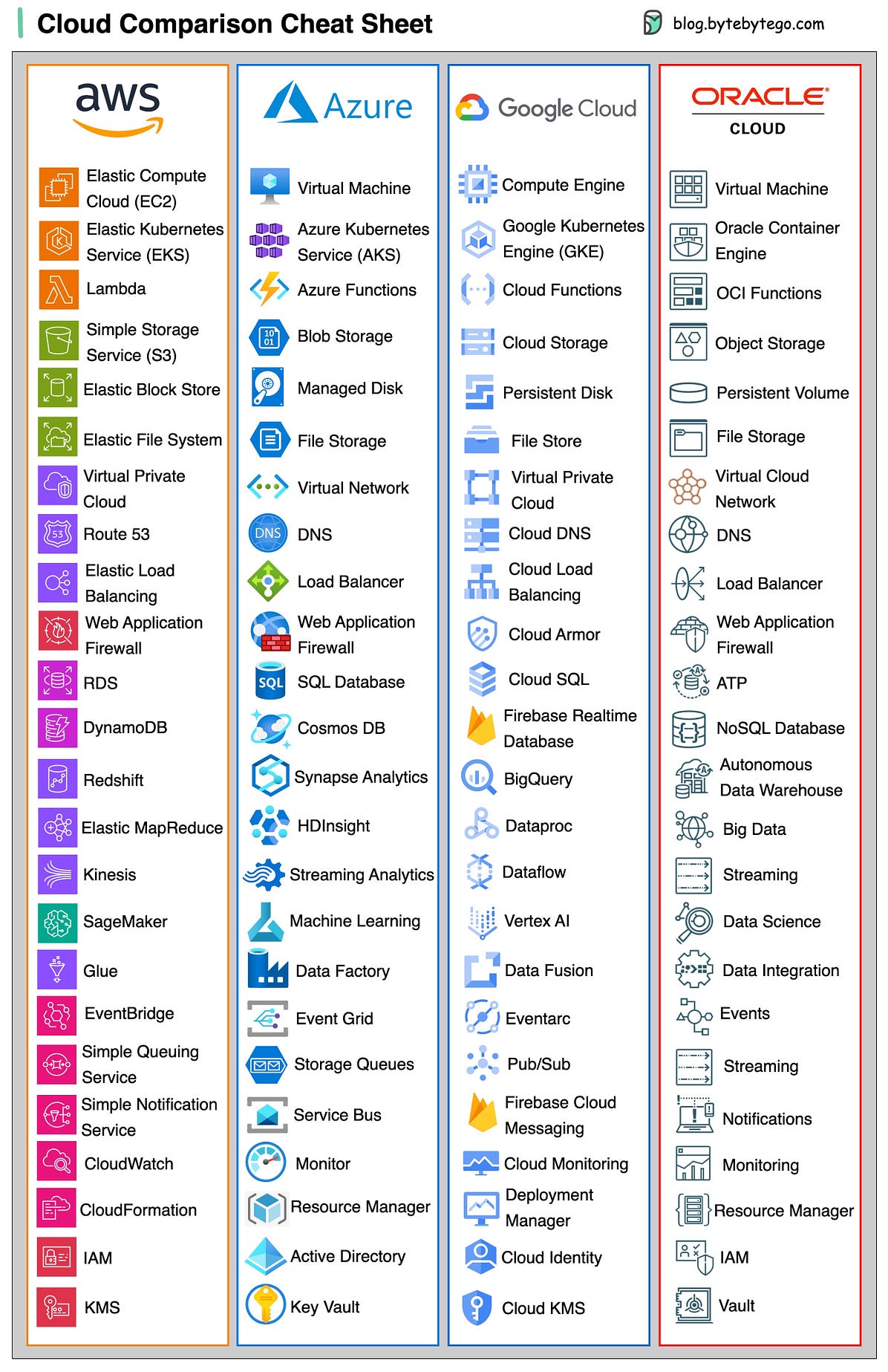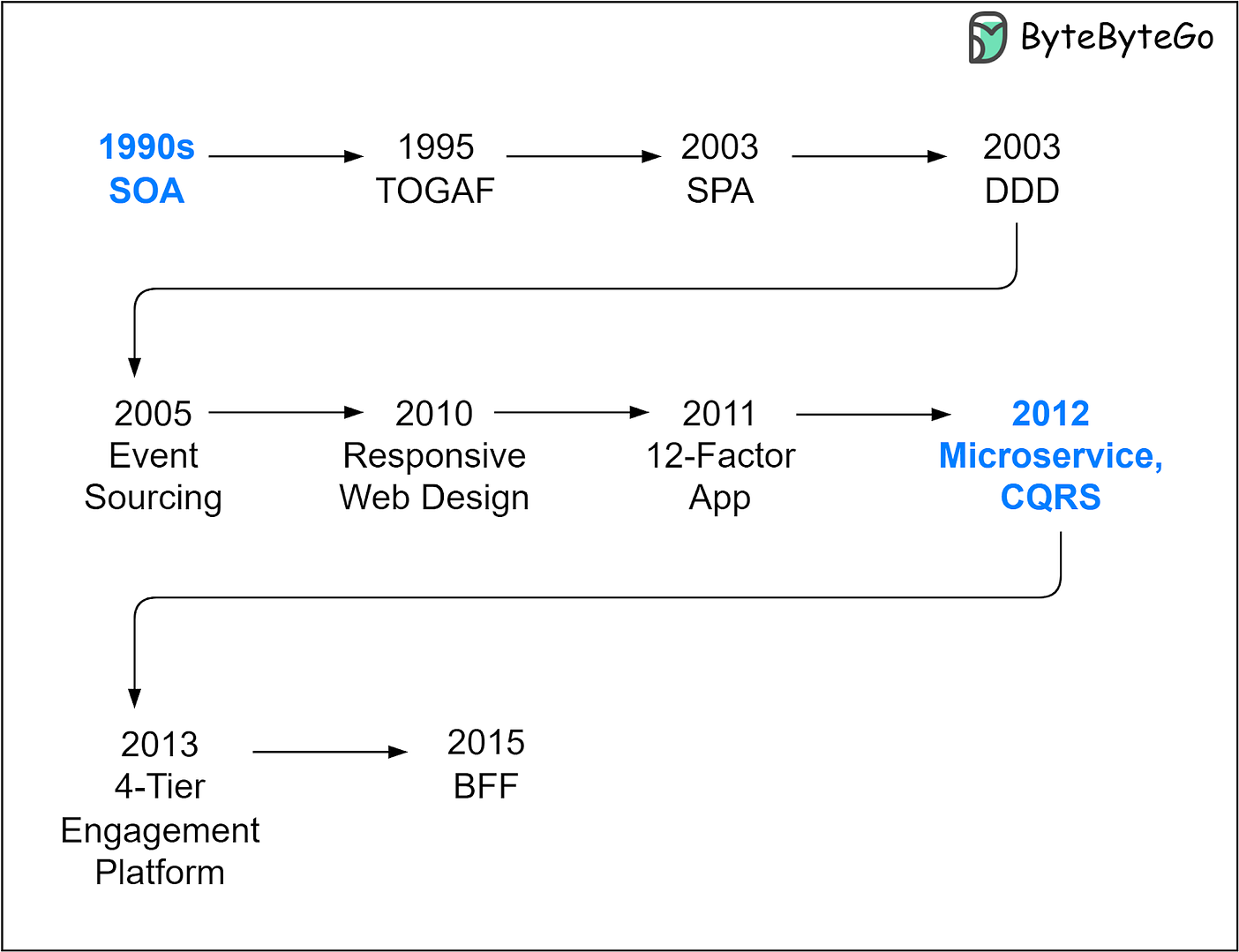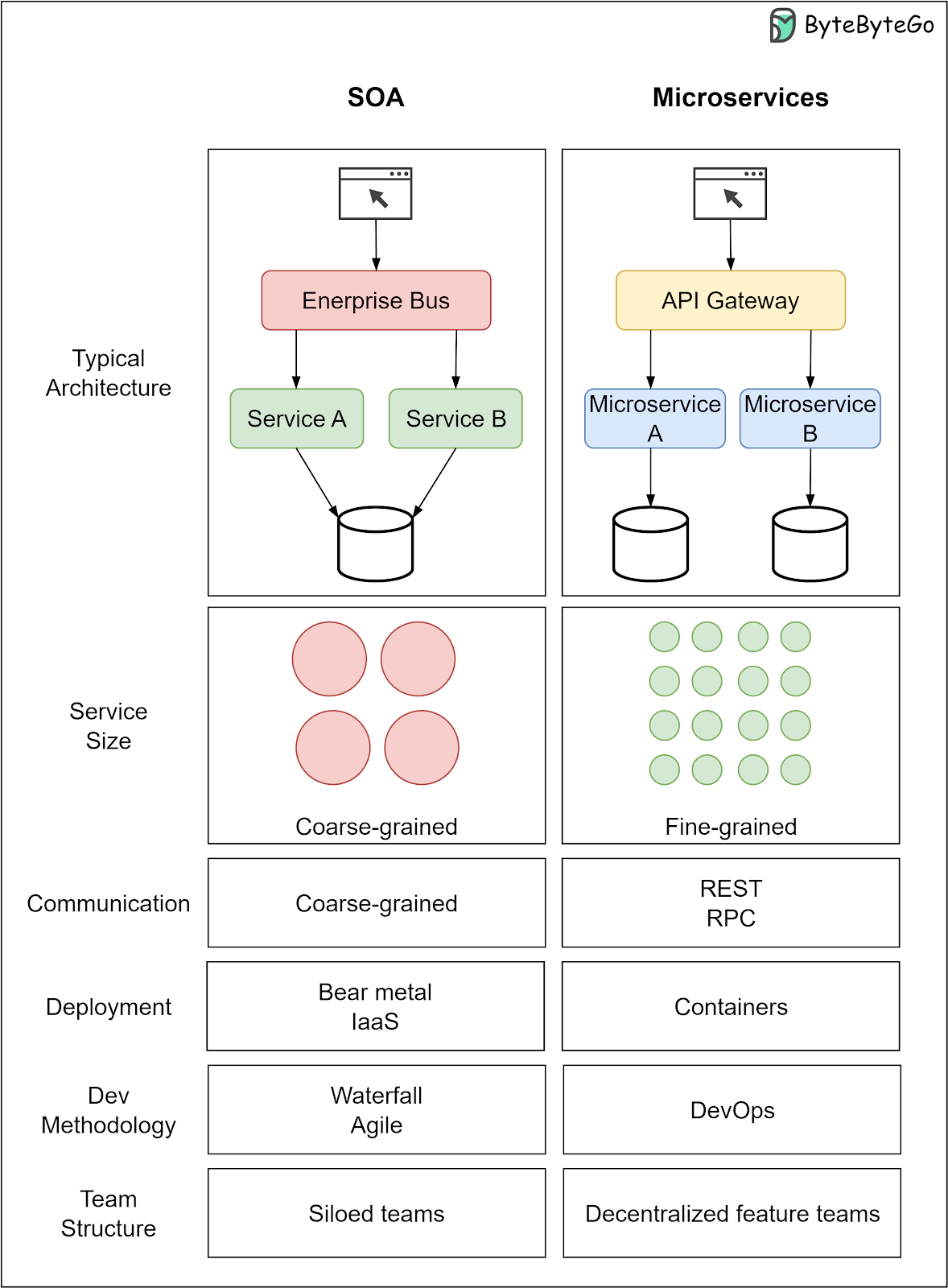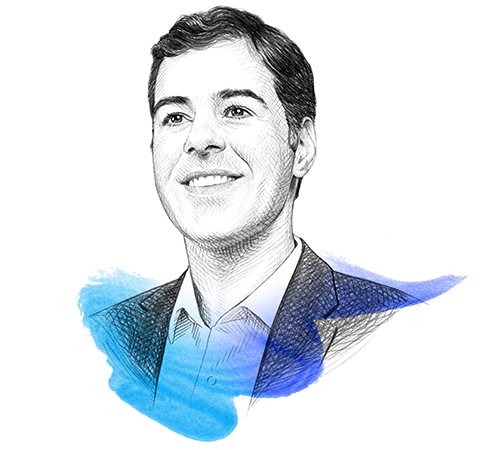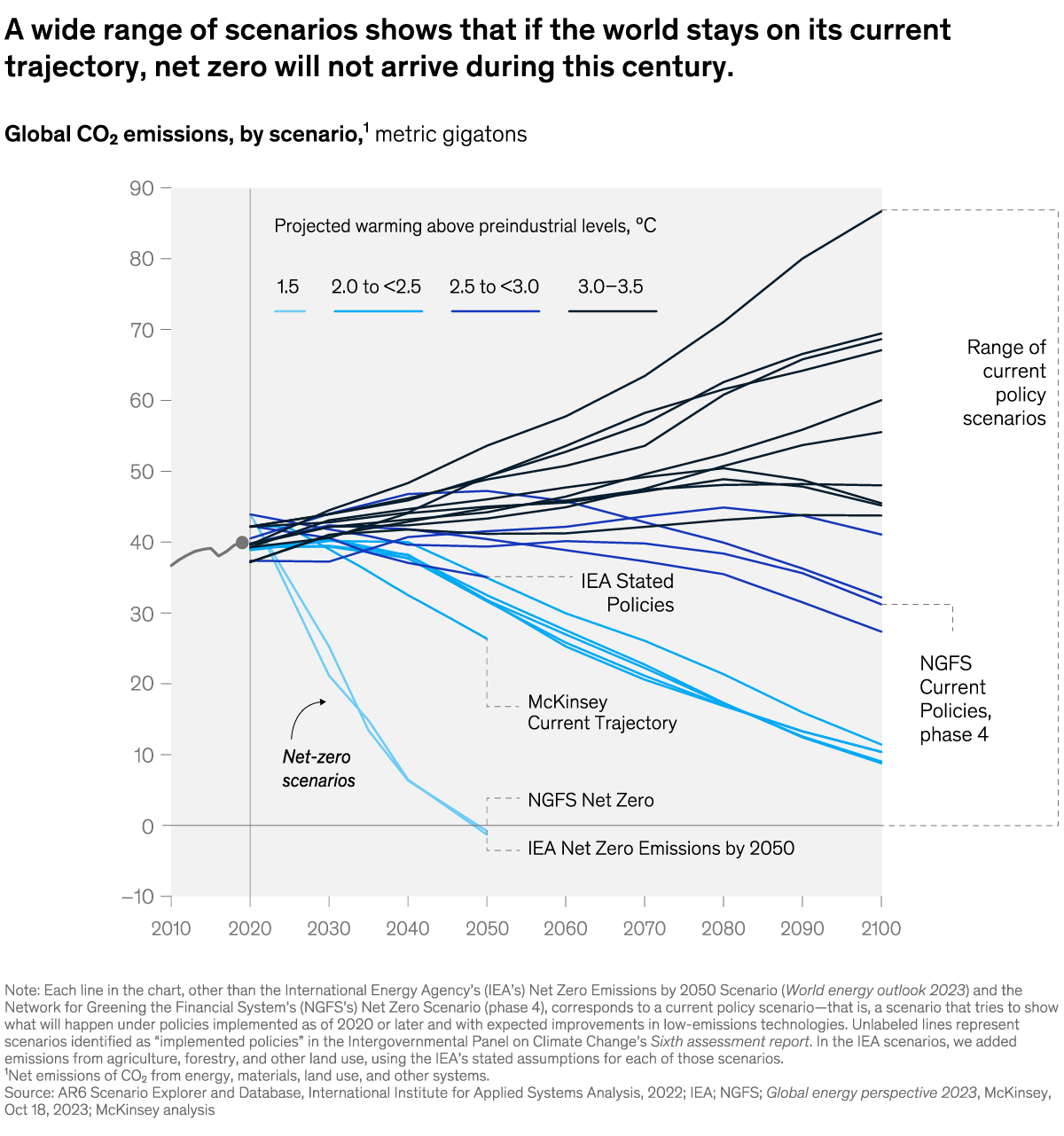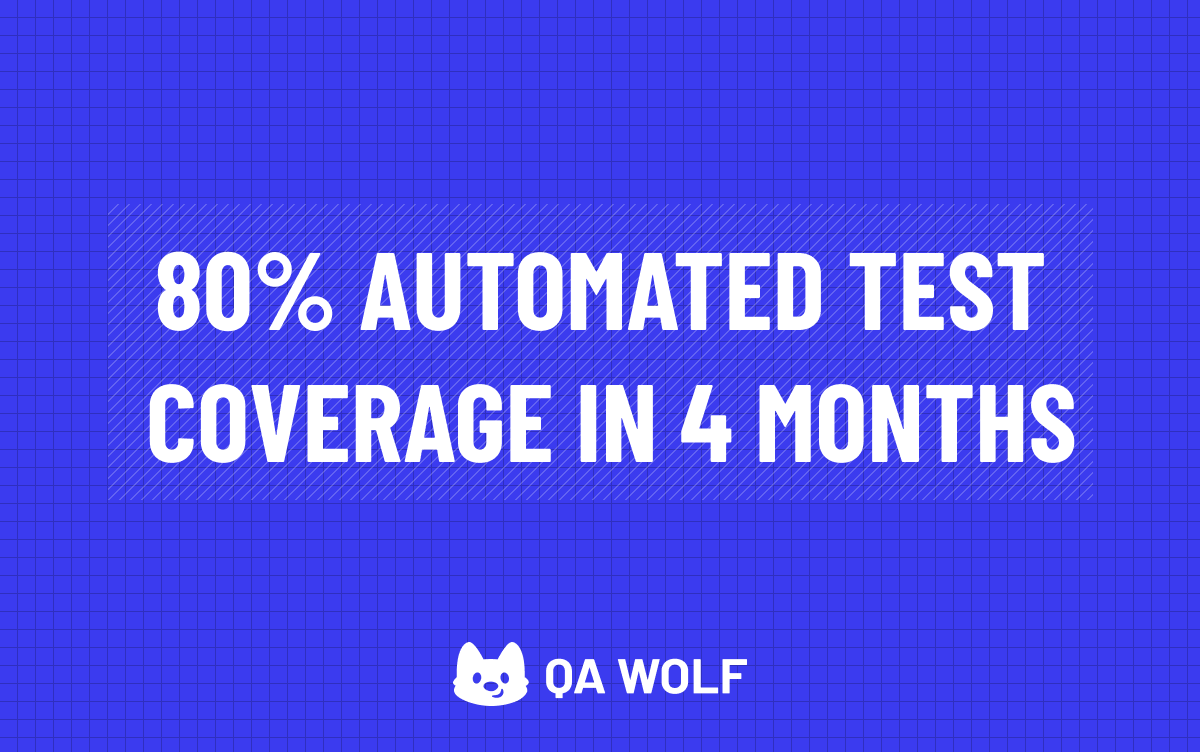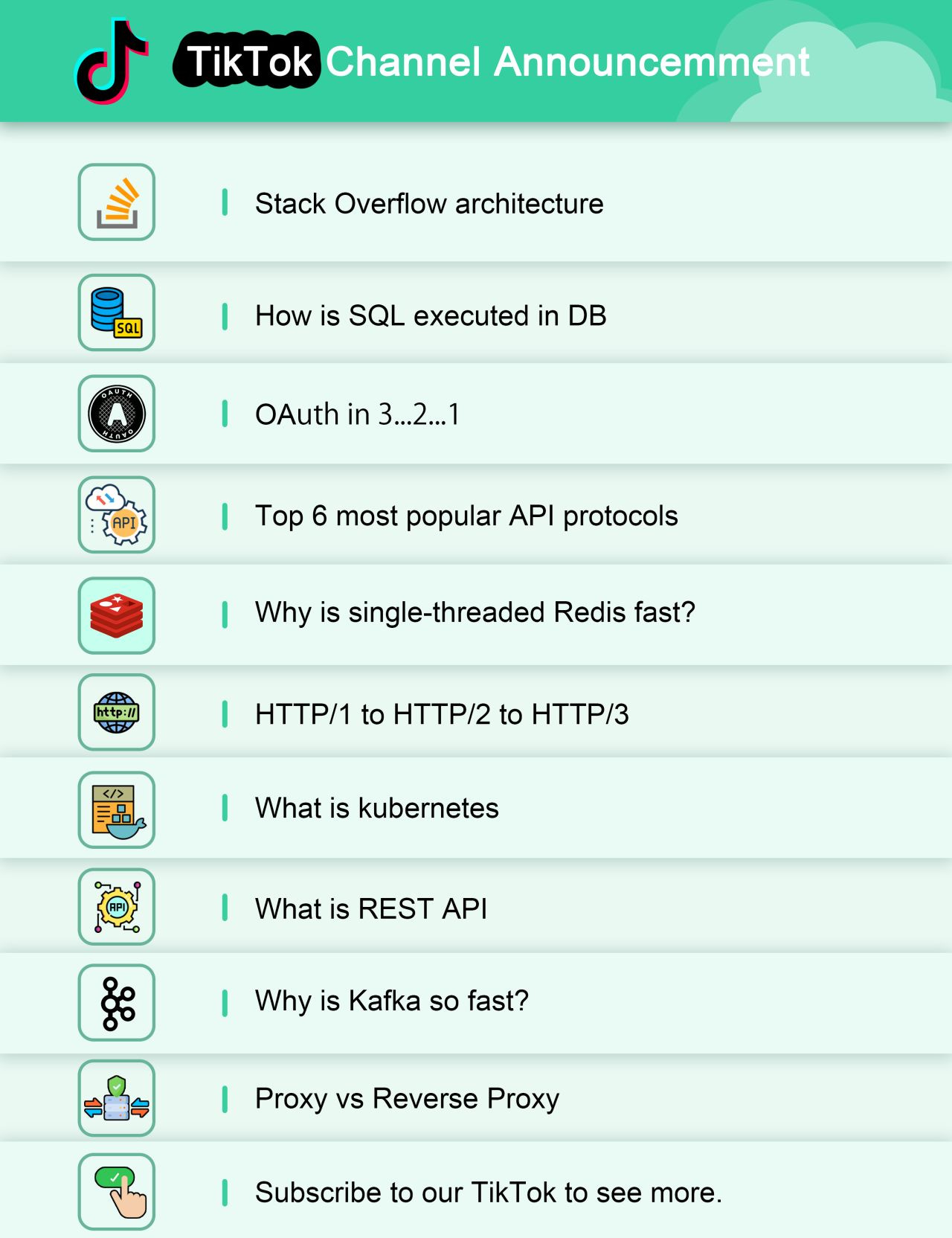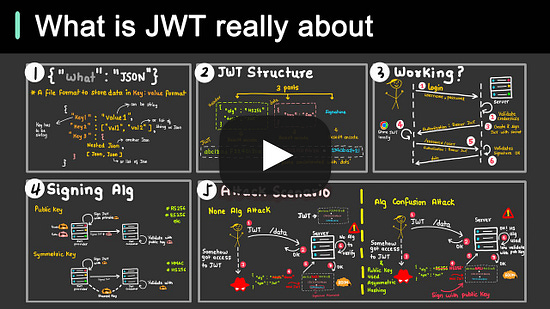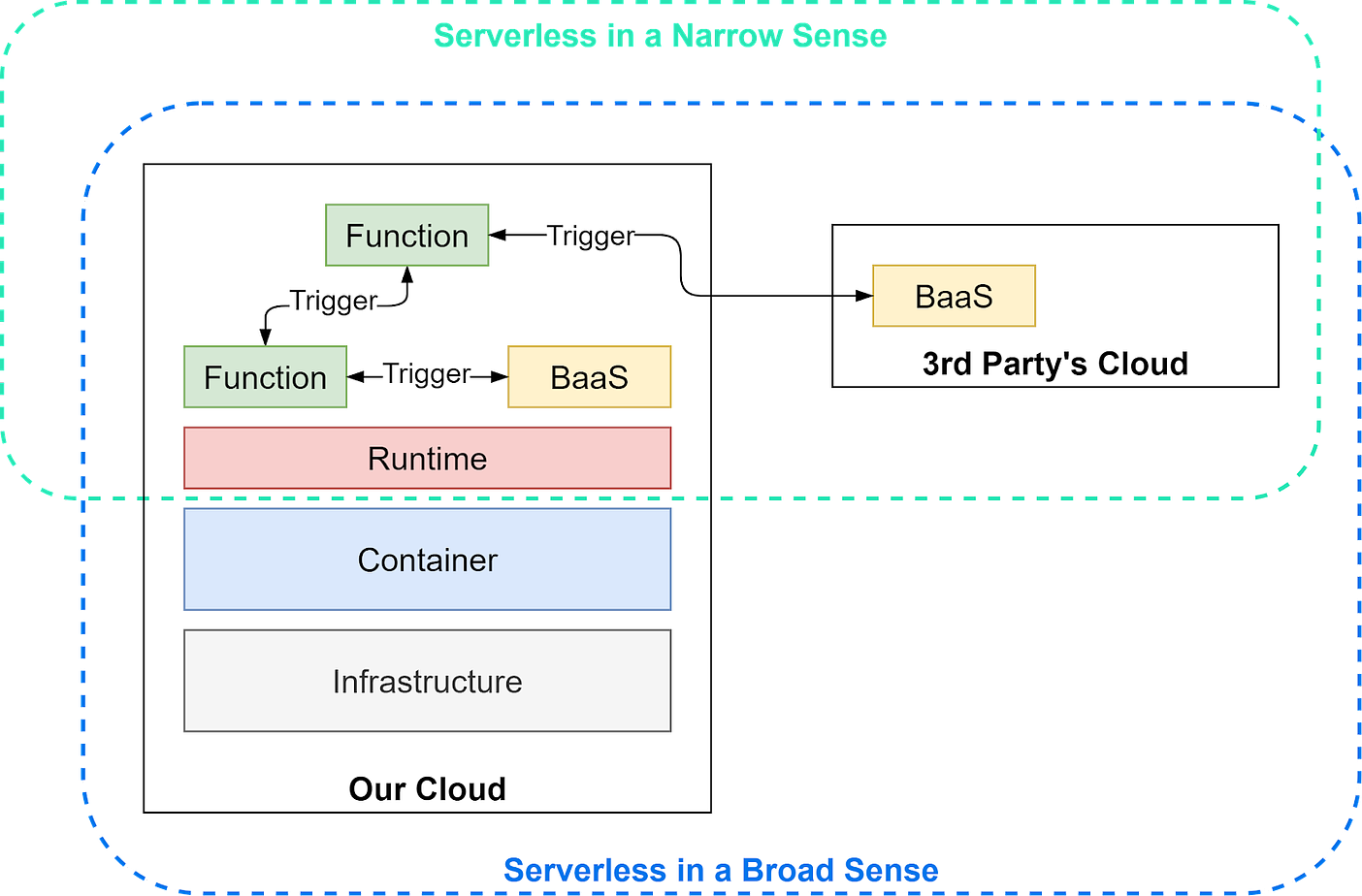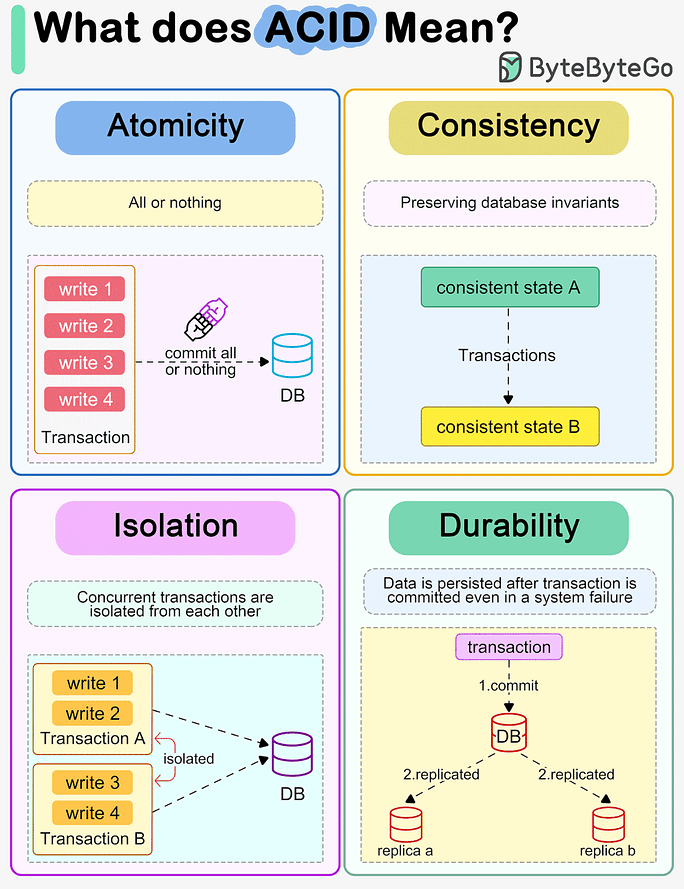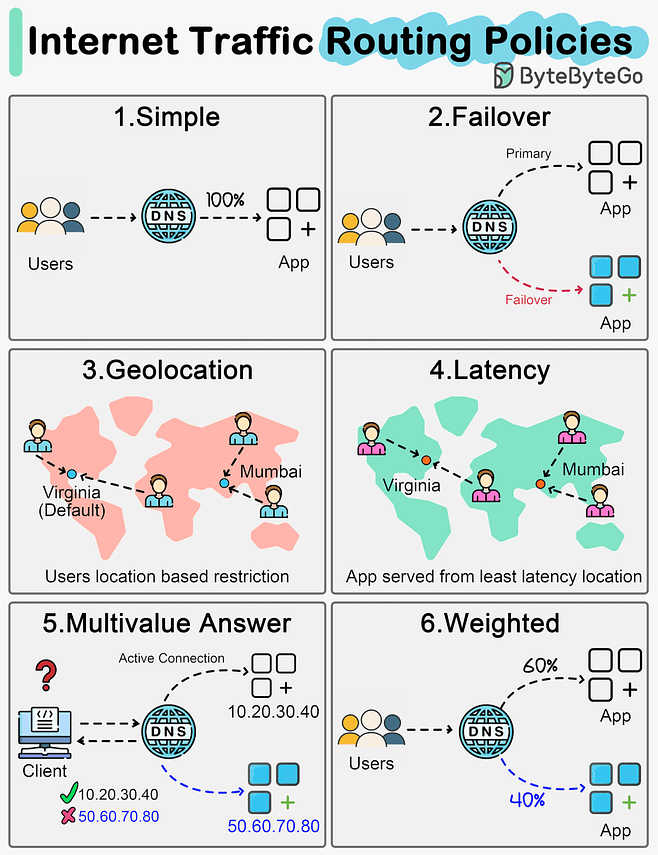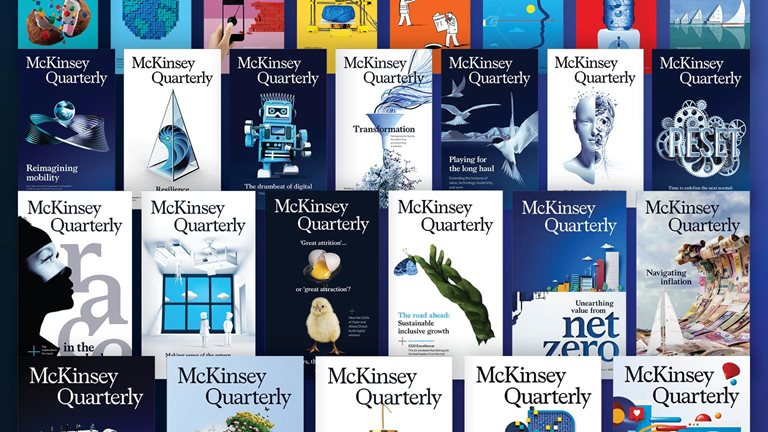Archives
- By thread 5369
-
By date
- June 2021 10
- July 2021 6
- August 2021 20
- September 2021 21
- October 2021 48
- November 2021 40
- December 2021 23
- January 2022 46
- February 2022 80
- March 2022 109
- April 2022 100
- May 2022 97
- June 2022 105
- July 2022 82
- August 2022 95
- September 2022 103
- October 2022 117
- November 2022 115
- December 2022 102
- January 2023 88
- February 2023 90
- March 2023 116
- April 2023 97
- May 2023 159
- June 2023 145
- July 2023 120
- August 2023 90
- September 2023 102
- October 2023 106
- November 2023 100
- December 2023 74
- January 2024 75
- February 2024 75
- March 2024 78
- April 2024 74
- May 2024 108
- June 2024 98
- July 2024 116
- August 2024 134
- September 2024 130
- October 2024 141
- November 2024 171
- December 2024 115
- January 2025 216
- February 2025 140
- March 2025 220
- April 2025 233
- May 2025 239
- June 2025 303
- July 2025 182
-
The year’s most popular articles from McKinsey Global Institute
McKinsey&Company
At #1: Generative AI and the future of work in America Brought to you by Liz Hilton Segel, chief client officer and managing partner, global industry practices, & Homayoun Hatami, managing partner, global client capabilities
As 2023 draws to a close, we’re revisiting our most popular insights of the year. Today, we give you our best-read pieces from the McKinsey Global Institute, which focus on topics including the impact of the pandemic on real estate, transforming human capital into competitive advantage, and more. At No. 1 is “Generative AI and the future of work in America,” by McKinsey’s Kweilin Ellingrud, Saurabh Sanghvi, Anu Madgavkar, Michael Chui, Olivia White, and coauthors. Read on for our full top 10, and don’t miss McKinsey Publishing’s 2023 highlights from our ‘Insights to Impact’ journey.
This email contains information about McKinsey's research, insights, services, or events. By opening our emails or clicking on links, you agree to our use of cookies and web tracking technology. For more information on how we use and protect your information, please review our privacy policy.
You received this email because you subscribed to our McKinsey Global Institute alert list.
Copyright © 2023 | McKinsey & Company, 3 World Trade Center, 175 Greenwich Street, New York, NY 10007
by "McKinsey Top Ten" <publishing@email.mckinsey.com> - 06:43 - 16 Dec 2023 -
The week in charts
The Week in Charts
Travel loyalty programs, cloud platforms, and more Share these insights
Did you enjoy this newsletter? Forward it to colleagues and friends so they can subscribe too. Was this issue forwarded to you? Sign up for it and sample our 40+ other free email subscriptions here.
This email contains information about McKinsey's research, insights, services, or events. By opening our emails or clicking on links, you agree to our use of cookies and web tracking technology. For more information on how we use and protect your information, please review our privacy policy.
You received this email because you subscribed to The Week in Charts newsletter.
Copyright © 2023 | McKinsey & Company, 3 World Trade Center, 175 Greenwich Street, New York, NY 10007
by "McKinsey Week in Charts" <publishing@email.mckinsey.com> - 03:32 - 16 Dec 2023 -
Giving customers what they want requires getting personal
Know thy customer Brought to you by Liz Hilton Segel, chief client officer and managing partner, global industry practices, & Homayoun Hatami, managing partner, global client capabilities

Perfecting your approach to personalized marketing
You’ve come a long way, irrelevant pop-up ad. Once a ubiquitous (and always vexatious) interruption flogging some unwanted item, now you are a lean and mean marketing machine—sort of. While companies have gotten better at knowing their customers and what their customers want, today’s digital-savvy omnichannel shoppers demand ever closer attention. Marketers also need to know when customers want something (including before customers know they want it), where they want to hear about it, and how they want to get it—all in a seamless experience that’s direct yet nuanced. It’s no wonder that many companies’ personalized marketing efforts fall short.
Leaders in personalization are continually tweaking and testing their communication efforts with shoppers to strengthen customer loyalty and spur growth. Among their constellation of personalized-marketing efforts, successful companies study individual consumer habits to learn the best time to send a marketing message, explore cross-channel communication efforts to reach customers both online and offline, and use data from loyalty programs to help personalize product offers more effectively.
To help ensure that your targeted communications are reaching your consumers in ways they want, read our 2017 classic “What shoppers really want from personalized marketing,” from McKinsey senior partners Julien Boudet and Brian Gregg and coauthors.Get personal 


The value of getting personalization right—or wrong—is multiplying
Share these insights
Did you enjoy this newsletter? Forward it to colleagues and friends so they can subscribe too. Was this issue forwarded to you? Sign up for it and sample our 40+ other free email subscriptions here.
This email contains information about McKinsey's research, insights, services, or events. By opening our emails or clicking on links, you agree to our use of cookies and web tracking technology. For more information on how we use and protect your information, please review our privacy policy.
You received this email because you subscribed to our McKinsey Classics newsletter.
Copyright © 2023 | McKinsey & Company, 3 World Trade Center, 175 Greenwich Street, New York, NY 10007
by "McKinsey Classics" <publishing@email.mckinsey.com> - 12:20 - 16 Dec 2023 -
EP90: How do SQL Joins Work?
EP90: How do SQL Joins Work?
This week’ system design refresher: How Does Linux Boot Process Work? (Youtube video) How do SQL Joins Work? What are the differences between cookies and sessions? How do DevOps, NoOps change the software development lifecycle (SDLC)? Get paid to build full-stack Zero-Knowledge applications on Aleo (Sponsored Forwarded this email? Subscribe here for moreThis week’ system design refresher:
How Does Linux Boot Process Work? (Youtube video)
How do SQL Joins Work?
What are the differences between cookies and sessions?
How do DevOps, NoOps change the software development lifecycle (SDLC)?
Get paid to build full-stack Zero-Knowledge applications on Aleo (Sponsored)
Unlock the future of dApps with Aleo's Layer-1 blockchain, where zero-knowledge tech is baked in—not tacked on. Enjoy the best of both worlds: bulletproof privacy and scalable performance, no crypto PhD required. Our language, Leo, and web-friendly SDK make it a breeze to integrate.
Aleo has deployed over $1 Million in grants.
How Does Linux Boot Process Work?
How do SQL Joins Work?
The diagram below shows how 4 types of SQL joins work in detail.
INNER JOIN
Returns matching rows in both tables.LEFT JOIN
Returns all records from the left table, and the matching records from the right table.RIGHT JOIN
Returns all records from the right table, and the matching records from the left table.FULL OUTER JOIN
Returns all records where there is a match in either left or right table.
Latest articles
If you’re not a paid subscriber, here’s what you missed this month.
To receive all the full articles and support ByteByteGo, consider subscribing:
What are the differences between cookies and sessions?
The diagram below shows how they work.
Cookies and sessions are both used to carry user information over HTTP requests, including user login status, user permissions, etc.
Cookies
Cookies typically have size limits (4KB). They carry small pieces of information and are stored on the users’ devices. Cookies are sent with each subsequent user request. Users can choose to ban cookies in their browsers.Sessions
Unlike cookies, sessions are created and stored on the server side. There is usually a unique session ID generated on the server, which is attached to a specific user session. This session ID is returned to the client side in a cookie. Sessions can hold larger amounts of data. Since the session data is not directly accessed by the client, the session offers more security.
How do DevOps, NoOps change the software development lifecycle (SDLC)?
The diagram below compares traditional SDLC, DevOps and NoOps.
In a traditional software development, code, build, test, release and monitoring are siloed functions. Each stage works independently and hands over to the next stage.
DevOps, on the other hand, encourages continuous development and collaboration between developers and operations. This shortens the overall life cycle and provides continuous software delivery.
NoOps is a newer concept with the development of serverless computing. Since we can architect the system using FaaS (Function-as-a-Service) and BaaS (Backend-as-a-Service), the cloud service providers can take care of most operations tasks. The developers can focus on feature development and automate operations tasks.
NoOps is a pragmatic and effective methodology for startups or smaller-scale applications, which moves shortens the SDLC even more than DevOps.Like
Comment
Restack
© 2023 ByteByteGo
548 Market Street PMB 72296, San Francisco, CA 94104
Unsubscribe
by "ByteByteGo" <bytebytego@substack.com> - 11:36 - 16 Dec 2023 -
The year’s most popular articles from the McKinsey Quarterly
McKinsey&Company
At #1: Stepping up: Becoming a high-potential CEO candidate Brought to you by Liz Hilton Segel, chief client officer and managing partner, global industry practices, & Homayoun Hatami, managing partner, global client capabilities
As 2023 draws to a close, we’re revisiting our most popular insights of the year. Today, we give you our best-read pieces from the McKinsey Quarterly, which focus on topics including preparing for the CEO role, re-engaging workers, and more. At No. 1 is “Stepping up: Becoming a high-potential CEO candidate,” by McKinsey’s Carolyn Dewar, Scott Keller, Vikram Malhotra, and Kurt Strovink. Read on for our full top 10, and don’t miss McKinsey Publishing’s 2023 highlights from our ‘Insights to Impact’ journey.
This email contains information about McKinsey’s research, insights, services, or events. By opening our emails or clicking on links, you agree to our use of cookies and web tracking technology. For more information on how we use and protect your information, please review our privacy policy.
You received this email because you subscribed to our McKinsey Quarterly alert list.
Copyright © 2023 | McKinsey & Company, 3 World Trade Center, 175 Greenwich Street, New York, NY 10007
by "McKinsey Top Ten" <publishing@email.mckinsey.com> - 10:45 - 15 Dec 2023 -
You’ve started up gen AI at your company. Here’s how to scale up.
The Shortlist
Four new insights Curated by Liz Hilton Segel, chief client officer and managing partner, global industry practices, & Homayoun Hatami, managing partner, global client capabilities
In 2023, we talked with hundreds of CEOs about their plans and priorities, successes and struggles. We collected the wisdom of that illustrious crowd in our new interactive article “What matters most? Eight CEO priorities for 2024.” In this edition of the CEO Shortlist, we’ll look closely at four of the priorities that CEOs say are guiding their plans for the coming year. And when we come back in January 2024, we’ll look at the other four. We hope you enjoy the read, and have a restful and festive end of year.
—Liz and Homayoun
Gen AI: Innovators dominate headlines, but scalers dominate markets. Thousands of companies all over the world are already using simple gen AI applications to radically transform every imaginable business activity. In 2024, CEOs will race to figure out how to scale from one application to many—and, critically, what the new tools will mean for work and the workforce.
Ready to scale up? Build The organization of the future: Enabled by gen AI, driven by people, with Sandra Durth, Bryan Hancock, Dana Maor, and Alex Sukharevsky.As the digital era enters middle age, most companies have at least started a digital and AI transformation. But few are getting the results they want. That’s usually because they haven’t done the fundamental organizational rewiring needed to extract maximum value from the hard work of digitizing the enterprise. Enter Rewired: The McKinsey Guide to Outcompeting in the Age of Digital and AI, our 2023 book that lays out our best insights for balancing priorities, assuring value, and finishing the job.
Study six signature moves for CEOs in Rewired to outcompete, by Eric Lamarre, Kate Smaje, and Rodney Zemmel.
.What’s behind Door 3? Growth is always job one for CEOs, but how to get there is never clear. Sometimes it’s about seizing market share; sometimes it’s about expanding into new markets; other times it’s about making a left turn into something completely new. One common denominator: the courage to act.
Be the main character of your growth story with Courageous growth: Six strategies for continuous growth outperformance, by Matt Banholzer, Michael Birshan, Rebecca Doherty, Louisa Greco, Paul Jenkins, Greg Kelly, Ari Libarikian, Nicolas Maechler, Lucy Pérez, Erik Roth, Sandra Sancier-Sultan, Kate Siegel, Andy West, and Jill Zucker.Where’s that prospectus? Amid uncertainty, investors and companies are holding back from committing capital to climate adaptation, even as the Earth grows hotter. What’s needed are thousands of new green-technology businesses, in every industry.
Find your green future with What would it take to scale critical climate technologies?, by Bernd Heid, Martin Linder, Sebastian Mayer, Anna Orthofer, and Mark Patel.
We hope you find these ideas inspiring and helpful. See you in January with four more McKinsey ideas for the CEO and others in the C-suite.Share these insights
This email contains information about McKinsey’s research, insights, services, or events. By opening our emails or clicking on links, you agree to our use of cookies and web tracking technology. For more information on how we use and protect your information, please review our privacy policy.
You received this email because you subscribed to The CEO Shortlist newsletter.
Copyright © 2023 | McKinsey & Company, 3 World Trade Center, 175 Greenwich Street, New York, NY 10007
by "McKinsey CEO Shortlist" <publishing@email.mckinsey.com> - 04:21 - 15 Dec 2023 -
Employee health varies considerably by country. What key trends should you know?
On Point
New McKinsey Health Institute research Brought to you by Liz Hilton Segel, chief client officer and managing partner, global industry practices, & Homayoun Hatami, managing partner, global client capabilities
•
Prioritizing worker happiness. Many employers are implementing return-to-office policies just as US employees face surging rates of depression. In fact, 56% of workers in North America describe having symptoms of depression, a 2023 study of about 11,000 people found. Boosting employee happiness can improve organizational performance, a former Harvard University professor shares. To create a psychologically safe workplace in which all can thrive, leaders must be willing to be vulnerable and discuss their concerns and limitations. [Fortune]
•
Global employee health. Most adults spend the majority of their waking hours at work. That offers employers a chance to influence employee health, McKinsey senior partner Drew Ungerman and coauthors suggest. More than half of employees in 30 countries report positive overall holistic health; however, results vary markedly by country, according to the McKinsey Health Institute’s (MHI) new survey of 30,000 workers. Japanese workers show the lowest overall percentage of positive scores, at 25%. Respondents from Türkiye report the highest, at 78%.
— Edited by Belinda Yu, editor, Atlanta
This email contains information about McKinsey's research, insights, services, or events. By opening our emails or clicking on links, you agree to our use of cookies and web tracking technology. For more information on how we use and protect your information, please review our privacy policy.
You received this email because you subscribed to the On Point newsletter.
Copyright © 2023 | McKinsey & Company, 3 World Trade Center, 175 Greenwich Street, New York, NY 10007
by "McKinsey On Point" <publishing@email.mckinsey.com> - 01:12 - 15 Dec 2023 -
School Bus Monitoring Software - Driver App that helps Driver and Attendants to Track and Monitor their work activity and School Bus
School Bus Monitoring Software - Driver App that helps Driver and Attendants to Track and Monitor their work activity and School Bus
Get a 360-degree view of your children's school bus, pickups/drops, safety, driving patterns, routes, delays, etc.Our advanced school bus tracking software is designed to ensure the safety and efficiency of student transportation.
Key Features of SmartBus Driver App








Provide school buses with advanced tools to reduce workload and increase productivity.

Uffizio Technologies Pvt. Ltd., 4th Floor, Metropolis, Opp. S.T Workshop, Valsad, Gujarat, 396001, India
by "Uffizio Software Technologies Pvt Ltd" <sunny.thakur@uffizio.com> - 07:00 - 14 Dec 2023 -
7 Microservices Interview Questions
7 Microservices Interview Questions
Microservices are a popular way to structure software systems today. As companies grow bigger and use more cloud computing, microservices help tackle complexity. In this issue, we review some key microservices concepts and common questions that come up in interviews: Forwarded this email? Subscribe here for moreLatest articles
If you’re not a subscriber, here’s what you missed this month.
The 6 Most Impactful Ways Redis is Used in Production Systems
The Tech Promotion Algorithm: A Structured Guide to Moving Up
To receive all the full articles and support ByteByteGo, consider subscribing:
Microservices are a popular way to structure software systems today. As companies grow bigger and use more cloud computing, microservices help tackle complexity.
In this issue, we review some key microservices concepts and common questions that come up in interviews:
What are microservices?
What issues do microservices aim to solve?
What new challenges do microservices introduce?
What are some popular microservices solutions?
How does monitoring and alerting work with microservices?
How are logs collected and analyzed?
What is a Service Registry?
Now let’s start with the definition of microservices.
1. What Are Microservices?
We can quote from Martin Fowler and Adrian Cockcroft on key aspects of microservices.
From Martin Fowler:
“The microservice architectural style is an approach to developing a single application as a suite of small services, each running in its own process and communicating with lightweight mechanisms, often an HTTP resource API. These services are built around business capabilities and independently deployable by fully automated deployment machinery. There is a bare minimum of centralized management of these services, which may be written in different programming languages and use different data storage technologies.”
From Adrian Cockcroft:
“Microservices are loosely coupled service-oriented architecture with bounded contexts.”
Key Aspects of Microservices
From the insightful definitions by Martin Fowler and Adrian Cockcroft, we can summarize these key aspects of a microservice architecture:
Decompose monolithic application into small, independent services. This allows different product teams to develop, test, and deploy services that align to specific business capabilities. Useful for large organizations to break down monolithic systems and improve productivity.
Loosely coupled services communicating via APIs. Frontend/backend components communicate via REST, whil inter-service communications use RPC for efficient request/response.
Carefully designed around bounded contexts. Each service has clear module boundaries and encapsulated domain logic to avoid tight coupling between services.
Enables effective DevOps practices. It is an important part of the microservice development methodology. Small, full-stack teams fully own specific services end-to-end. Containerization, automation, and container orchestration are used to effectively deploy microservices.
Horizontally scalable by design, resilient to failures. Services can scale out independently as needed. Built with fault tolerance in mind.
Decentralized governance and flexibility. Teams can choose whatever technology makes sense for their service.
Requires extensive monitoring and instrumentation due to:
Growth in services - As monoliths decompose into many independent services, the number of components to track grows quickly.
Infrastructure abstraction via containers/orchestrators - Runtime platforms like Kubernetes handle infrastructure. So monitoring must happen at the application code level using sidecars to aggregate logs, metrics and traces.
2. What Are the Differences Between SOA and Microservices?
Service-oriented architecture (SOA) and microservices architecture styles are important milestones in software architecture's evolution. The diagram below shows the progression of key architectural styles.
Service-oriented architecture emerged in the late 1990s to help manage enterprise software systems’ growing complexity. In the 2000s, SOA gained more industry attention and adoption by companies. However, SOA faced implementation complexity challenges.
Then in the 2010s, microservices architecture emerged in response to SOA’s limitations. Many large internet companies started adopting microservices to break down their services into smaller components. Microservices gained momentum with cloud computing’s evolution, as containers and orchestration tools made microservices' development, deployment, and monitoring easier.
Let’s compare their differences in more detail. The diagram below lists some of the differences.
The SOA architectural style offers coarse-grained services, typically a centralized approach where services are grouped by business functions and shared across multiple applications. The microservice style offers fine-grained service granularity through a decentralized approach where small, independent services perform specific functions within an application context.
The communication methods also evolve over time. SOA emphasizes uniform communication protocols and standardized interfaces for services to interact. Microservices lean towards diverse communication protocols and interfaces, often based on REST or message queues.
Cloud computing has evolved from Infrastructure-as-a-Service (IaaS) to Platform-as-a-Service (PaaS) to container-based PaaS. So microservice-based applications deploy on containers by default.
As the technical architecture changes, the organizational structure mirrors it (Conway’s law). So with microservices, the team structure requires multi-functional product teams. Each team focuses on a specific domain.
Keep reading with a 7-day free trial
Subscribe to ByteByteGo Newsletter to keep reading this post and get 7 days of free access to the full post archives.
A subscription gets you:
An extra deep dive on Thursdays Full archive Many expense it with team's learning budget Like
Comment
Restack
© 2023 ByteByteGo
548 Market Street PMB 72296, San Francisco, CA 94104
Unsubscribe
by "ByteByteGo" <bytebytego@substack.com> - 11:39 - 14 Dec 2023 -
A vibrant sector in manufacturing is packed with good jobs. What will it take to fill them?
On Point
Attracting younger workers to manufacturing Brought to you by Liz Hilton Segel, chief client officer and managing partner, global industry practices, & Homayoun Hatami, managing partner, global client capabilities
•
Gen Z and industrial work. Gen Z is largely indifferent to industrial work, new research shows. Just 14% of Gen Z respondents report that they would contemplate an industrial career, and 26% said that they would work in an industrial role only for the short term, per a recent survey of about 2,000 Gen Zers. However, offering opportunities to grow could convince Gen Zers to explore sectors such as logistics and manufacturing. More than 30% said that having a clear path to a promotion would make them consider taking an industrial job. [Fast Company]
•
Vacant jobs. Recent headlines chronicling the decline of US manufacturing have almost entirely overlooked a vibrant sector within manufacturing. The industrial technology sector, which we call the Titanium Economy, is brimming with high-quality jobs that could create opportunities for millions of workers, McKinsey senior partner Asutosh Padhi and coauthors share. Filling those jobs, however, is a different story. In the past decade, 2.4 million industrial jobs went unfilled in America, costing the US economy $2.5 trillion, McKinsey estimates.
•
Enticing younger workers. Industrial tech companies across the US are working to fill vacant positions. By giving employees clear pathways to advancement, one waste management company has attracted a younger, more energized workforce. (As of 2019, 50% of its workforce had not been born when the company was founded in 1975.) Read The Titanium Economy to learn what companies are doing to address labor shortages in manufacturing, and for more insights on Gen Z in the workplace, subscribe to our newsletter Mind the Gap.
— Edited by Belinda Yu, editor, Atlanta
This email contains information about McKinsey's research, insights, services, or events. By opening our emails or clicking on links, you agree to our use of cookies and web tracking technology. For more information on how we use and protect your information, please review our privacy policy.
You received this email because you subscribed to the On Point newsletter.
Copyright © 2023 | McKinsey & Company, 3 World Trade Center, 175 Greenwich Street, New York, NY 10007
by "McKinsey On Point" <publishing@email.mckinsey.com> - 01:30 - 14 Dec 2023 -
Through the macroeconomic fog, CEOs are seeking growth
Re:think
Even amid uncertainty, CEOs focus on growth FRESH TAKES ON BIG IDEAS
ON BUSINESS BUILDING
Why more CEOs are prioritizing building new businessesAri Libarikian
For CEOs, this period of macroeconomic uncertainty is different. Unlike in previous downturns, such as the dot-com bust and the financial crisis, we’re seeing CEOs prioritize medium- and long-term growth and disruption rather than just buckling down for near-term resilience measures. The latest McKinsey Global Survey on new-business building bears this out: one out of every two CEOs said business building is a top three priority and their biggest lever for growth.
Companies nowadays realize that they can’t just prioritize near-term resilience. They need to keep looking around the corner and building for the future. They’re asking questions like: Where is disruption coming from? Where will my business find new ways to drive revenue and innovate in new markets with products, services, and ways of serving customers? Then they’re building businesses around the answers to position their organizations for the future. Accelerating this wave is the emergence of generative AI, which makes companies think about how they can leverage large language models and all their data to speed up new-business building.
Why build a new business as opposed to adding features to an existing product or service? In many cases, the opportunity is in a fundamentally different space, and you can’t just piggyback; you need a different type of organization or a different product, or to serve different customers by using the strengths of the core business to scale into new areas. Also, building a successful new business typically requires an operating model that’s different from that of the core business. It’s more like a start-up, where you’re fast and agile, you’re testing and learning, and you’re building new technologies rather than leaning on legacy systems and processes. When you piggyback off existing businesses, as much as you try to speed it up, your maximum speed is limited by the constraints of the core business.
These have long been truisms about business building, but gen AI makes this moment unique. Gen AI can create insights, synthesize information, and help people—both employees and customers—do things much more quickly, inexpensively, and efficiently. It lets businesses take all the data they have accumulated and analyze it to create insights that can then be turned into value-adds for customers. If the whole idea of business building is to move faster to deliver differentiated value or experience for customers, gen AI puts the process on steroids, allowing companies to move much faster. It’s a game changer.“The latest McKinsey Global Survey on new-business building found that one out of every two CEOs said business building is a top three priority and their biggest lever for growth.”
But scaling a start-up is very different from managing a large, mature business. It requires thinking about what will be disruptive over the next three, five, or ten years, not just over the next 24 months. Leaders need to think differently about talent and incentives. There’s also the challenge of running a multimodel organization, in which the core is moving at one speed and the new business is moving at another, with different sets of objectives, cultural traits, and ways of working. Managing these separate spheres at multiple speeds to get maximum value for the enterprise is becoming another core requirement for CEOs.
It takes openness to a different way of working and some patience. Companies are not going to see financial results in just three or six months. It’s going to take time. It also takes a willingness to work with different kinds of people, such as by hiring entrepreneurial and founder types rather than seasoned corporate executives. And leaders need to create organizational separation between the core business and the start-up, making sure they avoid any kind of political rancor between the two sides. At the end of the day, it takes a lot of intestinal fortitude. Many new ideas will fail. It’s not about batting a thousand. It’s about making the portfolio work and having a couple hits that can scale.
Interestingly, in our survey we found that CEOs put business building higher on their list of priorities than their direct reports do. That’s because direct reports typically have shorter-term objectives. They have goals they’re trying to meet and typically less incentive to look around the corner. The CEO’s challenge includes how to bring these people along on this journey.ABOUT THIS AUTHOR
Ari Libarikian is a senior partner in McKinsey’s New York office and the global leader of Leap, McKinsey’s business-building practice.
MORE FROM THIS AUTHOR
UP NEXT
McKinsey insights for 2024
What are the mindsets and strategies that enable companies to outpace peers on revenue and profit growth? How can CEOs make the most of their relationships with CMOs? Will generative AI change the real estate industry? Are there innovative systems to measure—and stimulate—productivity? McKinsey’s experts will rethink these and other crucial business and leadership topics when this column returns in 2024.
This email contains information about McKinsey’s research, insights, services, or events. By opening our emails or clicking on links, you agree to our use of cookies and web tracking technology. For more information on how we use and protect your information, please review our privacy policy.
You received this email because you subscribed to our McKinsey Quarterly alert list.
Copyright © 2023 | McKinsey & Company, 3 World Trade Center, 175 Greenwich Street, New York, NY 10007
by "McKinsey Quarterly" <publishing@email.mckinsey.com> - 03:11 - 13 Dec 2023 -
Join me on Thursday for troubleshooting applications and back end performance with APM 360
Hi MD,
It's Liam Hurrell, Manager of Customer Training at New Relic University, here. Are you ready to revolutionise your application monitoring and troubleshooting practices with our latest offering, New Relic APM 360? If so, you can register for the free online workshop that I'll be hosting on Thursday, 14th December at 10 AM GMT/ 11 AM CET.
APM 360 allows you to get a unified view of critical telemetry data across your stack and development lifecycle. Prevent issues before they escalate and troubleshoot faster with integrated infrastructure monitoring, error user impact analysis, and distributed tracing. In this workshop, I’ll show you how New Relic APM 360 can help eliminate blind spots with guided workflows.
You can find the full agenda on the registration page here. While we recommend attending the hands-on workshop live, you can also register to receive the recording.
Hope to see you then,
Liam HurrellManager, Customer TrainingNew Relic
This email was sent to info@learn.odoo.com as a result of subscribing or providing consent to receive marketing communications from New Relic. You can tailor your email preferences at any time here.Privacy Policy © 2008-23 New Relic, Inc. All rights reserved
by "Liam Hurrell, New Relic" <emeamarketing@newrelic.com> - 06:06 - 13 Dec 2023 -
Family-owned businesses often earn superior returns. New research tells us why.
On Point
Secrets of family-owned businesses’ success Brought to you by Liz Hilton Segel, chief client officer and managing partner, global industry practices, & Homayoun Hatami, managing partner, global client capabilities
•
Outside CEO onboarding. Most family-owned businesses run by multiple generations will eventually decide to bring in an external CEO. Successfully onboarding an outside CEO requires a deft touch, since the process must factor in the nuances of family member relationships, in addition to relatives’ relationships with other outside leaders. The first stage of effective onboarding is spent learning. Through activities such as reading annual reports, the CEO devotes a month to gaining essential insights about a company. [HBR]
•
Generating greater value. Resilient and adaptable, family-owned businesses (FOBs)—companies in which founders or descendants hold significant share capital or voting rights—have survived and thrived for decades. In fact, FOBs have created more value and impact than non-FOBs over the past decade, McKinsey senior partner Acha Leke and coauthors explain. McKinsey research finds that between 2017 and 2022, FOBs posted an average TSR of 2.6%, compared with 2.3% for non-FOBs.
— Edited by Belinda Yu, editor, Atlanta
This email contains information about McKinsey's research, insights, services, or events. By opening our emails or clicking on links, you agree to our use of cookies and web tracking technology. For more information on how we use and protect your information, please review our privacy policy.
You received this email because you subscribed to the On Point newsletter.
Copyright © 2023 | McKinsey & Company, 3 World Trade Center, 175 Greenwich Street, New York, NY 10007
by "McKinsey On Point" <publishing@email.mckinsey.com> - 01:47 - 13 Dec 2023 -
Decarbonizing buildings profitably can be achieved through AI-enabled means
On Point
A plan to decarbonize buildings Brought to you by Liz Hilton Segel, chief client officer and managing partner, global industry practices, & Homayoun Hatami, managing partner, global client capabilities
•
Energy-efficient buildings. Using energy more efficiently could help countries significantly cut greenhouse gas emissions, experts say. Stopping leaks and preventing devices from drawing power when not in use could allow energy systems to operate with less power, which would lower consumption of fossil fuels. Improving how well buildings are insulated could also reduce demand on cooling and heating systems. At COP28 in Dubai, about 120 countries have agreed to increase energy efficiency rates each year to 4%, from 2%, through the end of the decade. [Reuters]
•
Smarter decarbonization. Real estate companies often find it difficult and expensive to decarbonize buildings. But thanks to improved data and analytic methods, there is a better way. Machine learning, AI, and physics-based modeling can allow owners of real estate portfolios to create financially optimized plans for each building. For large portfolios, this new approach represents a more than 100-fold increase in the pace and scale of decarbonization planning compared with traditional methods, McKinsey senior partner Alastair Green and coauthors share.
— Edited by Belinda Yu, editor, Atlanta
This email contains information about McKinsey's research, insights, services, or events. By opening our emails or clicking on links, you agree to our use of cookies and web tracking technology. For more information on how we use and protect your information, please review our privacy policy.
You received this email because you subscribed to the On Point newsletter.
Copyright © 2023 | McKinsey & Company, 3 World Trade Center, 175 Greenwich Street, New York, NY 10007
by "McKinsey On Point" <publishing@email.mckinsey.com> - 01:36 - 12 Dec 2023 -
SmartBus - Parent App helping Parents to Track and Monitor their Children and School Bus
SmartBus - Parent App helping Parents to Track and Monitor their Children and School Bus
Get a 360-degree view of your children's school bus, pickups/drops, safety, driving patterns, routes, delays, etc.Our advanced school bus tracking software is designed to ensure the safety and efficiency of student transportation.
Key features of SmartBus parent app








Provide school buses with advanced tools to reduce workload and increase productivity.

Uffizio Technologies Pvt. Ltd., 4th Floor, Metropolis, Opp. S.T Workshop, Valsad, Gujarat, 396001, India
by "Uffizio Software Technologies Pvt Ltd" <sunny.thakur@uffizio.com> - 07:00 - 11 Dec 2023 -
What are you doing about your tech? A leader’s practical guide to tech implementation
Get practical Brought to you by Liz Hilton Segel, chief client officer and managing partner, global industry practices, & Homayoun Hatami, managing partner, global client capabilities
In the early days of the dot-com boom, many online businesses were unaware of the practical aspects of order fulfillment—and sometimes failed because of inefficient warehousing or inventory management practices. But even today’s more sophisticated organizations can endanger major initiatives by not paying attention to practical details. As more companies begin to implement new technologies, it’s important for leaders to examine whether their organizations have the tools, capabilities, and talent in place to ensure that operations run as planned. Here are some factors to consider.
Keeping the big picture in mind is essential when it comes to large-scale undertakings. But there are times when overlooking seemingly minor details can derail an entire project. To see how things really work in practice, prepare to invest both money and common sense, suggests McKinsey senior partner Rodney Zemmel. “Work with frontline people right from the beginning, before a line of code is written,” he says. It’s important to figure out if and how a technology will be used before adopting it. McKinsey senior partner Kate Smaje describes the case of a company that had developed an app for its warehouse operators to use on a tablet. “It was a beautiful front end, and they were so proud of it,” she says. “A member of my team very quietly, slightly timidly said, ‘Don’t the warehouse people wear gloves?’ And there was this sort of audible, ‘Oh, what on earth are we going to do now?’ moment.”
That’s the number of factors that are critical to realizing value from digital transformations, according to the results of a McKinsey Global Survey. A key activity that high-performing organizations do better than the rest is attracting and developing top tech talent—including both technology-savvy executives and frontline workers. In addition to creating a culture that nurtures tech talent, top performers are “more likely than other companies to integrate new hires in digital roles directly into the business rather than the IT function,” note the authors of the survey report.
That’s McKinsey partner James Kaplan in an episode of The McKinsey Podcast on the challenges organizations face in deriving value from cloud programs. A decade ago, he says, adopting cloud seemed to be a “no-brainer, similar to previous infrastructure improvements,” but since then, organizations have realized that cloud requires a considerable degree of change to IT architecture and business technology operating models. Leaders tasked with implementing cloud technology may be excited about its potential but will need a solid understanding of the payback on the investment, observes McKinsey partner Mark Gu. If not monitored carefully, the cost and complexity of moving to the cloud can multiply by “two to three times what you need,” he cautions.
“Whenever you develop a technology, there will be a secondary effect somewhere in the system that will prevent you from fully capturing the value,” observes McKinsey senior partner Eric Lamarre in an episode of our Inside the Strategy Room podcast. Lamarre cautions against deploying technology without identifying the business problem that needs to be solved. For example, an airline company found that a technology to calculate extra cargo space did not work as expected because of a problem on the ground: operators at the airport had not been trained to maximize pallet caseloads. Similarly, the technology creating the most buzz today, generative AI (gen AI), may not always be the best solution to a problem, says Lamarre. “It’s good to come back to the fundamentals—what are the pain points in the company?—then search broadly for the set of technologies that will address them,” he suggests. “Sometimes, that will be gen AI, but that doesn’t mean gen AI is the place to start.”
There’s little doubt that gen AI can improve workplace productivity—for example, we have found that the technology can help software developers code up to twice as fast. But leaders may need to educate themselves and their teams on how to manage gen AI’s drawbacks, particularly its tendency to “hallucinate”—present false or illogical information as reality. While some of these errors can be amusing, they can confuse users and be mistaken for fact. Organizations can help by teaching everyday users to create better prompts and ensuring that humans review gen AI output carefully.
Lead by being practical.
— Edited by Rama Ramaswami, senior editor, New York
Share these insights
Did you enjoy this newsletter? Forward it to colleagues and friends so they can subscribe too. Was this issue forwarded to you? Sign up for it and sample our 40+ other free email subscriptions here.
This email contains information about McKinsey’s research, insights, services, or events. By opening our emails or clicking on links, you agree to our use of cookies and web tracking technology. For more information on how we use and protect your information, please review our privacy policy.
You received this email because you subscribed to the Leading Off newsletter.
Copyright © 2023 | McKinsey & Company, 3 World Trade Center, 175 Greenwich Street, New York, NY 10007
by "McKinsey Leading Off" <publishing@email.mckinsey.com> - 04:47 - 11 Dec 2023 -
A guide to getting the net-zero transition right
On Point
Seven principles to guide decisions Brought to you by Liz Hilton Segel, chief client officer and managing partner, global industry practices, & Homayoun Hatami, managing partner, global client capabilities
•
Cost-competitive renewables. Technological advancements have made renewable energy much less costly. With solar and wind power becoming more competitive when compared with nonrenewable energy sources, it’s now possible to envision a carbon-free energy system. By 2030, global consumption of coal, natural gas, and oil is expected to reach its highest point, the IEA estimates. But with demand for natural gas and oil set to plateau well into that decade, achieving net-zero emissions by 2050 could still remain out of reach. [FT]
•
Off target. The world is making progress in cutting greenhouse gas emissions. Even so, humanity is not on track to limit global warming to below 2°C. McKinsey examined 23 “current policy” scenarios from the IPCC, McKinsey’s Global Energy Perspective 2023, the Network for Greening the Financial System, and the IEA. If emissions stay on their current trajectory, global emissions of CO2 would not reach net zero even by the end of the century, Sven Smit, chair of the McKinsey Global Institute, and coauthors explain.
— Edited by Belinda Yu, editor, Atlanta
This email contains information about McKinsey's research, insights, services, or events. By opening our emails or clicking on links, you agree to our use of cookies and web tracking technology. For more information on how we use and protect your information, please review our privacy policy.
You received this email because you subscribed to the On Point newsletter.
Copyright © 2023 | McKinsey & Company, 3 World Trade Center, 175 Greenwich Street, New York, NY 10007
by "McKinsey On Point" <publishing@email.mckinsey.com> - 02:51 - 11 Dec 2023 -
The week in charts
The Week in Charts
Net-zero goals, private equity’s role in insurance, and more Share these insights
Did you enjoy this newsletter? Forward it to colleagues and friends so they can subscribe too. Was this issue forwarded to you? Sign up for it and sample our 40+ other free email subscriptions here.
This email contains information about McKinsey's research, insights, services, or events. By opening our emails or clicking on links, you agree to our use of cookies and web tracking technology. For more information on how we use and protect your information, please review our privacy policy.
You received this email because you subscribed to The Week in Charts newsletter.
Copyright © 2023 | McKinsey & Company, 3 World Trade Center, 175 Greenwich Street, New York, NY 10007
by "McKinsey Week in Charts" <publishing@email.mckinsey.com> - 03:20 - 9 Dec 2023 -
EP89: What does ACID mean?
EP89: What does ACID mean?
This week’s system design refresher: ByteByteGo’s TikTok / Instagram Reels Channel Why is JWT popular? (Youtube video) What does ACID mean? Internet traffic routing policies 😘 Kiss bugs goodbye with fully automated end-to-end test coverage (Sponsored) Forwarded this email? Subscribe here for moreThis week’s system design refresher:
ByteByteGo’s TikTok / Instagram Reels Channel
Why is JWT popular? (Youtube video)
What does ACID mean?
Internet traffic routing policies
😘 Kiss bugs goodbye with fully automated end-to-end test coverage (Sponsored)
If you've tried to build automated test coverage in-house, you know it takes years to scale. Try QA Wolf instead - they get web apps to 80% test coverage in just 4 months. They will create and maintain your test suite in open-source Playwright (no vendor lock-in, you own the code), and provide unlimited parallel test runs on their infrastructure.
The best part: QA Wolf saves you money. QA Wolf has multiple case studies of customers saving at least $200k/year in QA engineering and infrastructure costs.
*BIG* announcement: we’ve re-launched our TikTok / Instagram reels channel!
The first video is already live, and we'll try to post new videos every week.
We'll be covering a wide range of topics, including:
Stack Overflow's shocking architecture
HTTP/1 -> HTTP/2 -> HTTP/3
How to avoid double charges?
Why is Kafka fast?
How to choose the right database?
What is REST?
What is GraphQL
What is gRPC
Proxy Vs Reverse Proxy
And more…
If you're interested in seeing more, make sure to subscribe to our TikTok channel and Instagram channel.
We are new to creating short videos and would appreciate your feedback :) Thank you.Why is JWT popular?
Latest articles
If you’re not a paid subscriber, here’s what you missed this month.
To receive all the full articles and support ByteByteGo, consider subscribing:
What does ACID mean?
The diagram below explains what ACID means in the context of a database transaction.
Atomicity
The writes in a transaction are executed all at once and cannot be broken into smaller parts. If there are faults when executing the transaction, the writes in the transaction are rolled back.
So atomicity means “all or nothing”.Consistency
Unlike “consistency” in CAP theorem, which means every read receives the most recent write or an error, here consistency means preserving database invariants. Any data written by a transaction must be valid according to all defined rules and maintain the database in a good state.Isolation
When there are concurrent writes from two different transactions, the two transactions are isolated from each other. The most strict isolation is “serializability”, where each transaction acts like it is the only transaction running in the database. However, this is hard to implement in reality, so we often adopt loser isolation level.Durability
Data is persisted after a transaction is committed even in a system failure. In a distributed system, this means the data is replicated to some other nodes.
Internet Traffic Routing Policies
Internet traffic routing policies (DNS policies) play a crucial role in efficiently managing and directing network traffic. Let's discuss the different types of policies.
Simple:
Directs all traffic to a single endpoint based on a standard DNS query without any special conditions or requirements.Failover:
Routes traffic to a primary endpoint but automatically switches to a secondary endpoint if the primary is unavailable.Geolocation:
Distributes traffic based on the geographic location of the requester, aiming to provide localized content or services.Latency:
Directs traffic to the endpoint that provides the lowest latency for the requester, enhancing user experience with faster response times.Multivalue Answer:
Responds to DNS queries with multiple IP addresses, allowing the client to select an endpoint. However, it should not be considered a replacement for a load balancer.Weighted Routing Policy:
Distributes traffic across multiple endpoints with assigned weights, allowing for proportional traffic distribution based on these weights.
Over to you: Which DNS policy do you find most relevant to your network management needs?
Like
Comment
Restack
© 2023 ByteByteGo
548 Market Street PMB 72296, San Francisco, CA 94104
Unsubscribe
by "ByteByteGo" <bytebytego@substack.com> - 11:35 - 9 Dec 2023 -
Cómo pueden los líderes tomar medidas sostenidas para la adaptación al cambio climático
Además, lo que distingue a las empresas con crecimiento e innovación Dados los retos climáticos actuales, la adaptación es ahora tan importante como la mitigación. Los líderes se reúnen para la COP28, la conferencia anual de las Naciones Unidas sobre el cambio climático que se celebra del 30 de noviembre al 12 de diciembre, por lo que lo invitamos a leer el artículo destacado de este mes de Alexis Trittipo, Hamid Samandari, Homayoun Hatami, Mekala Krishan, Philipp Koch y Carter Powis, de McKinsey. Los autores proponen diez requisitos clave para un enfoque sistemático de la adaptación climática, como adoptar una mentalidad de gestión del riesgo climático y establecer un apoyo institucional y un compromiso hacia prácticas que ayuden a afrontar los complejos retos actuales del cambio climático. Otros temas destacados de la edición de este mes son los siguientes:
•
Cómo las empresas pueden superar a sus homólogas en innovación y crecimiento centrándose en la aspiración, la activación y la ejecución.
•
Cómo desarrollar la resiliencia geopolítica.
•
El potencial de la IA generativa en el sector inmobiliario.
•
Consejos prácticos para ayudar a los chiefs of staff a maximizar el impacto de su función.
La selección de nuestros editores
LOS DESTACADOS DE ESTE MES

Empresas con crecimiento e innovación: Una vista desde la cima
Los estudios de McKinsey demuestran que centrarse en la aspiración, la activación y la ejecución puede ayudar a las empresas a superar en innovación y crecimiento a sus pares.
Invierta productivamente
Cómo desarrollar la resiliencia geopolítica
Las tensiones geopolíticas han ido en aumento, creando riesgos importantes para las empresas, sobre todo las que operan a escala internacional. Aquí se explica cómo planear para hacerles frente.
Prepárese
La IA generativa: Una guía para los directores financieros
¿Cómo deberían abordar los CFOs la IA generativa –en toda la empresa y en la función financiera– y qué pueden hacer ahora mismo para ascender rápidamente en la curva de aprendizaje?
Sea proactivo
La IA generativa puede cambiar la industria inmobiliaria, pero el sector debe cambiar para aprovechar sus ventajas
El sector inmobiliario puede utilizar la IA generativa para convertir los datos de la industria en un tesoro en siete pasos.
Dé el salto a la IA generativa
Mirar alrededor de las esquinas: Cómo sobresalir como chief of staff
Un chief of staff puede ser decisivo para el éxito de un CEO y, al mismo tiempo, avanzar en su propia carrera. Aquí presentamos ocho consejos de quienes han dominado esta función.
8 mejores prácticas
Replantear la salud de los empleados: Más allá del agotamiento, hacia una salud holística
Una nueva encuesta del McKinsey Health Institute realizada en 30 países ofrece información sobre cómo las organizaciones pueden ayudar a crear un lugar de trabajo que priorice la salud física, mental, social y espiritual.
Mueva la agujaEsperamos que disfrute de los artículos en español que seleccionamos este mes y lo invitamos a explorar también los siguientes artículos en inglés.
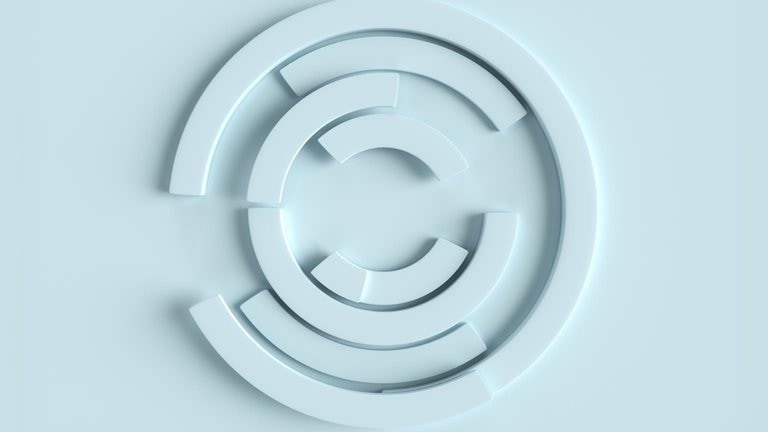
McKinsey Explainers
Find direct answers to complex questions, backed by McKinsey’s expert insights.
Learn more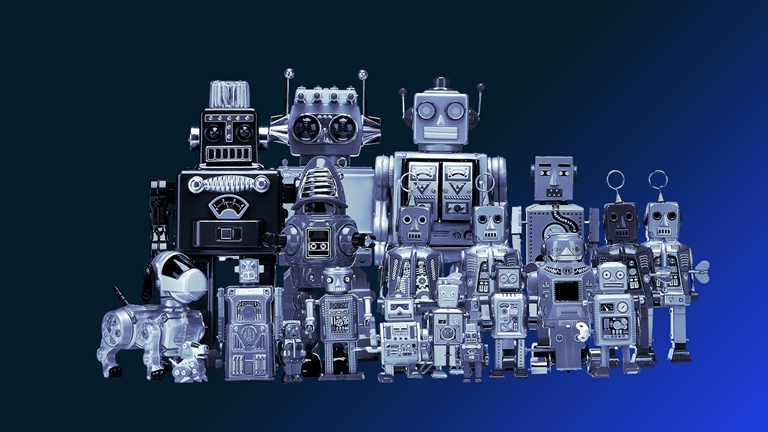
McKinsey Themes
Browse our essential reading on the topics that matter.
Get up to speed
McKinsey on Books
Explore this month’s best-selling business books prepared exclusively for McKinsey Publishing by Circana.
See the lists
McKinsey Chart of the Day
See our daily chart that helps explain a changing world—as we strive for sustainable, inclusive growth.
Dive in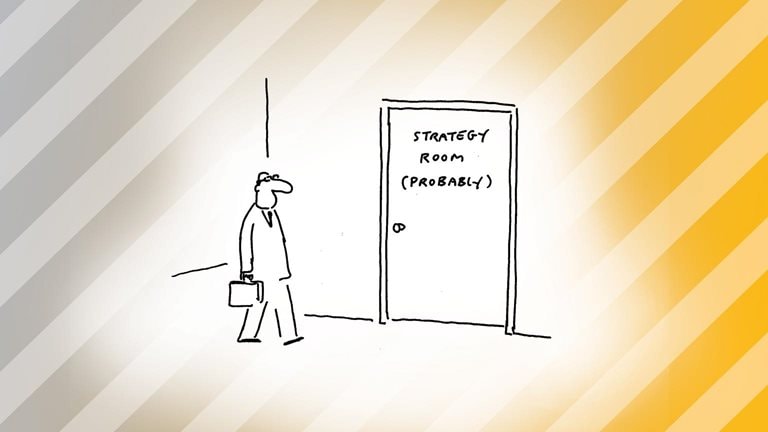
McKinsey Classics
Lack of certainty about the future is the very reason you need a strategy. Read our 2018 classic “How to confront uncertainty in your strategy” to learn more.
Rewind
The Daily Read
Our Daily Read newsletter highlights an article a day, picked by our editors.
Subscribe now— Edited by Joyce Yoo, editor, New York
COMPARTA ESTAS IDEAS
¿Disfrutó este boletín? Reenvíelo a colegas y amigos para que ellos también puedan suscribirse. ¿Se le remitió este articulo? Regístrese y pruebe nuestras más de 40 suscripciones gratuitas por correo electrónico aquí.
Este correo electrónico contiene información sobre la investigación , los conocimientos, los servicios o los eventos de McKinsey. Al abrir nuestros correos electrónicos o hacer clic en los enlaces, acepta nuestro uso de cookies y tecnología de seguimiento web. Para obtener más información sobre cómo usamos y protegemos su información, consulte nuestra política de privacidad.
Recibió este correo electrónico porque es un miembro registrado de nuestro boletín informativo Destacados.
Copyright © 2023 | McKinsey & Company, 3 World Trade Center, 175 Greenwich Street, New York, NY 10007
by "Destacados de McKinsey" <publishing@email.mckinsey.com> - 08:43 - 9 Dec 2023













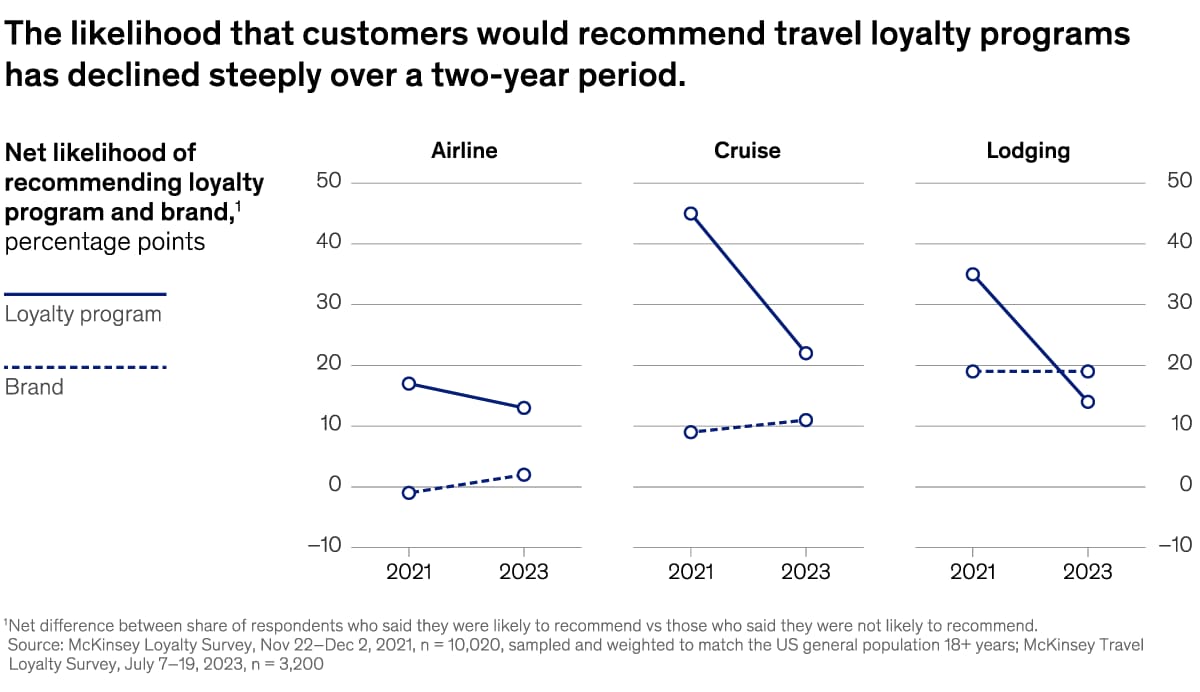


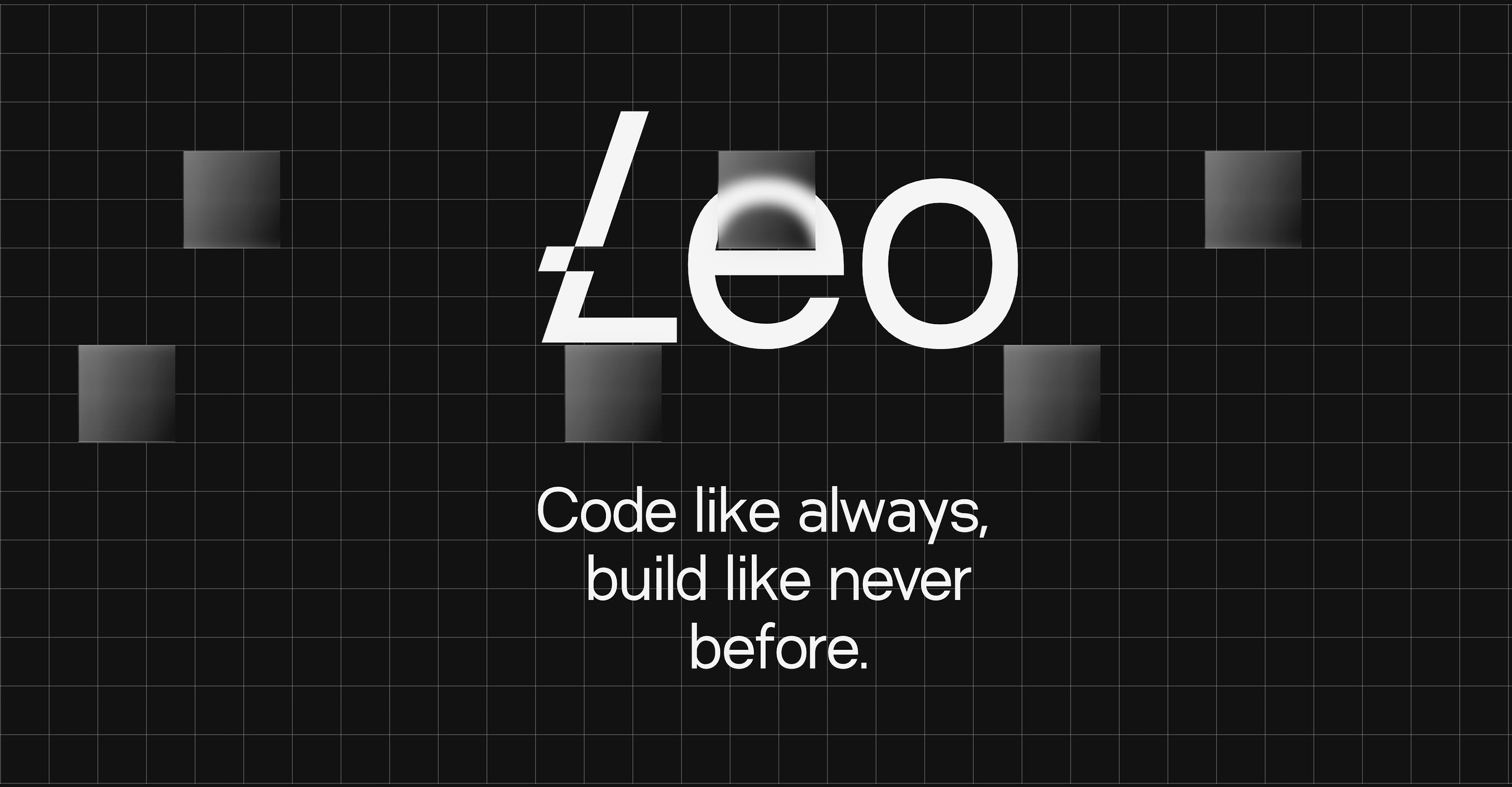
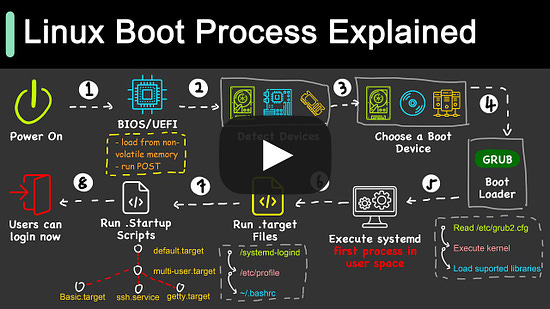
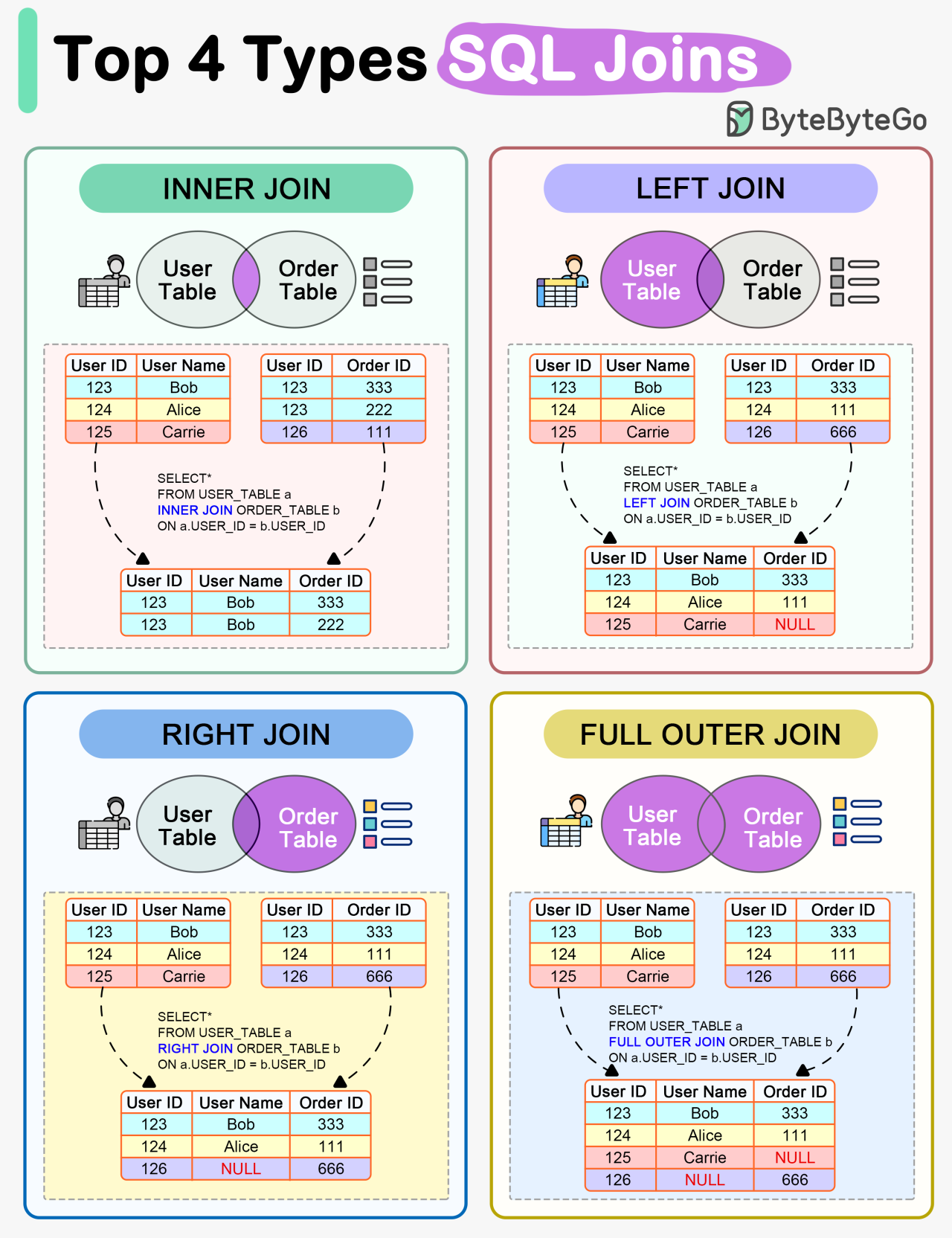

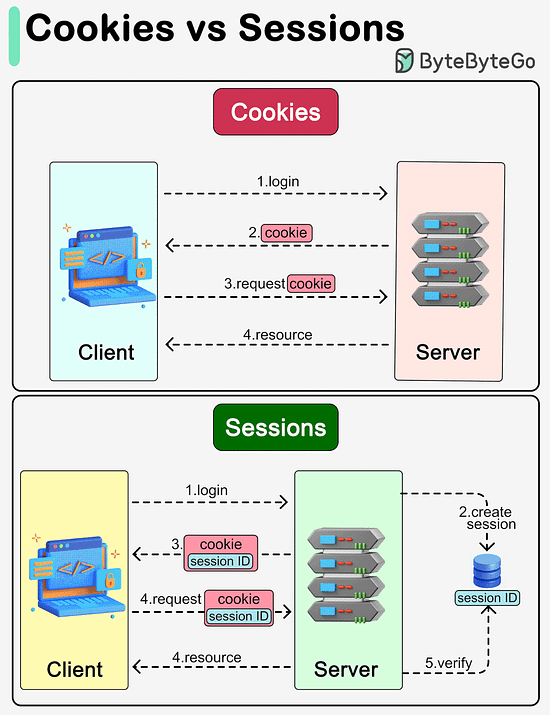
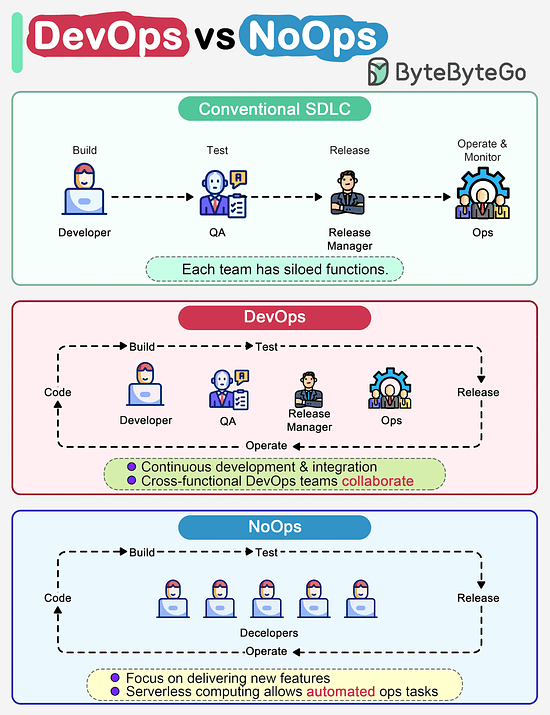














.png?width=1200&upscale=true&name=School%20bus%20drive%20app%20(1).png)

